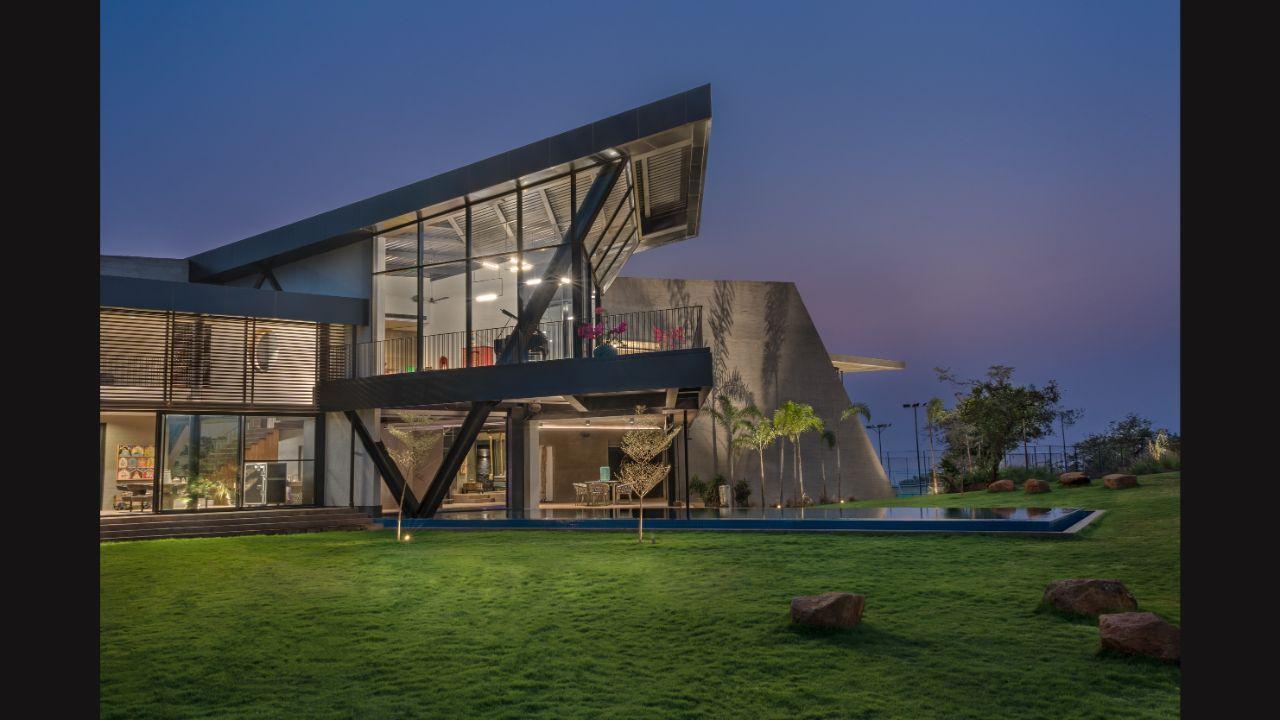A villa it constructed in Khopoli, amidst the picturesque Sahyadri hills, has won the firm ‘research and enquiry into Design’ (reD) Architects a nomination in the 2020-21 World Architecture Festival’s House or Villa (Rural/Nature) category

'A home in the clouds' designed by ‘research and enquiry into Design’ (reD) Architects has won the firm a shortlist at the 2020-21 World Architecture Festival in the Rural/Nature category for completed houses or villas. Photo: Fabien Charuau
Well-known Canadian-American architect Frank Gehry, who is the brain behind iconic structures such as the Guggenheim Museum Bilbao in Spain, said, “Architecture should speak of its time and place, but yearn for timelessness.” One such architectural gem — marrying new technology and local materials with an eye on sustainability — was recently constructed by a Mumbai-based firm several kilometres away from the hustle and bustle of the city.
ADVERTISEMENT
Set in Khopoli in a quiet section of the Sahyadri hills, the private property ‘Airavat’, or ‘A home in the clouds’ as it is referred to, was envisioned by ‘research and enquiry into Design’ (reD) Architects. It has won the firm a shortlist at the 2020-21 World Architecture Festival in the Rural/Nature category for completed houses or villas. The Delhi-based firm Studio Lotus’s project ‘Villa in the Woods’ has also been shortlisted in the same category.
Set in Khopoli in a quiet section of the Sahyadri hills, the private property ‘Airavat’, or ‘A home in the clouds’ as it is referred to, was envisioned by ‘research and enquiry into Design’ (reD) Architects. Photo: Fabien Charuau
WAF is an annual festival and awards ceremony which started in 2008. It is one of the most prestigious events in the architecture and development industry. This year it will be held in Lisbon in December. Speaking to Mid-day.com about the project, Apoorva Shroff, one of the partners at reD says, “The sweeping views of the Western Ghats in almost any direction are the highlight of this otherwise simple parcel of land.” She adds, “The capturing and framing of these picturesque landscapes was the primary inspiration behind the design.”
The firm, which was formed in 2004 by Rajiv Parekh, Ekta Puri, Maithili Raut and Shroff, started the project in 2018 and it was completed in December 2020. In the past, it is known to have renovated the homes of Ranbir Kapoor and Karan Johar, together with Gauri Khan. According to Shroff, the team’s intention with the Khopoli property was to create spaces of varying scales from monumental to cosy, while also integrating the nature that surrounds it into the home. “The unhindered movement of clouds passing through the house is the reason behind the name,” she says.
(Left to right) Maithili Raut, Rajiv Parekh, Ekta Puri and Apoorva Shroff. Photo: Tanuj Bhatia
At every corner, the architects wanted the drama of the house and the view that it captures to change and move with the viewer. So the concrete and metal structure has large sliding windows for taking in the natural landscape from the internal spaces of the house. Because the region faces extreme weather conditions, Shroff says practical features like large overhangs, verandahs, and a partially covered swimming pool were added.
A lot of focus, for the past few years, has been on sustainability and environment-friendly methods. This project has also tried to implement those elements. “One of the biggest challenges about being on the top of the mountain is the scarcity of water. We used the topography to ensure that the lowest part of the site was turned into a rainwater reservoir,” explains Shroff. All roof drainage and site surface run-off was thus channelled towards this plan to harvest water.
Responsible architecture needs to address issues of making a home self-reliant for electricity and water in the least, says Shroff. “This home attempts sustainability not only through its water collection and reuse ecosystem but also by the use of local and easy materials.” Shroff shares that very little wood has been used. Cross ventilation ensures that power is consumed minimally. Interestingly, rocks excavated from the site during construction were put back into building retaining walls and this added to the hill station appeal of the home.
Also Read: A new beginning for the 1979 Malayalam masterpiece ‘Kummatty’
 Subscribe today by clicking the link and stay updated with the latest news!" Click here!
Subscribe today by clicking the link and stay updated with the latest news!" Click here!






